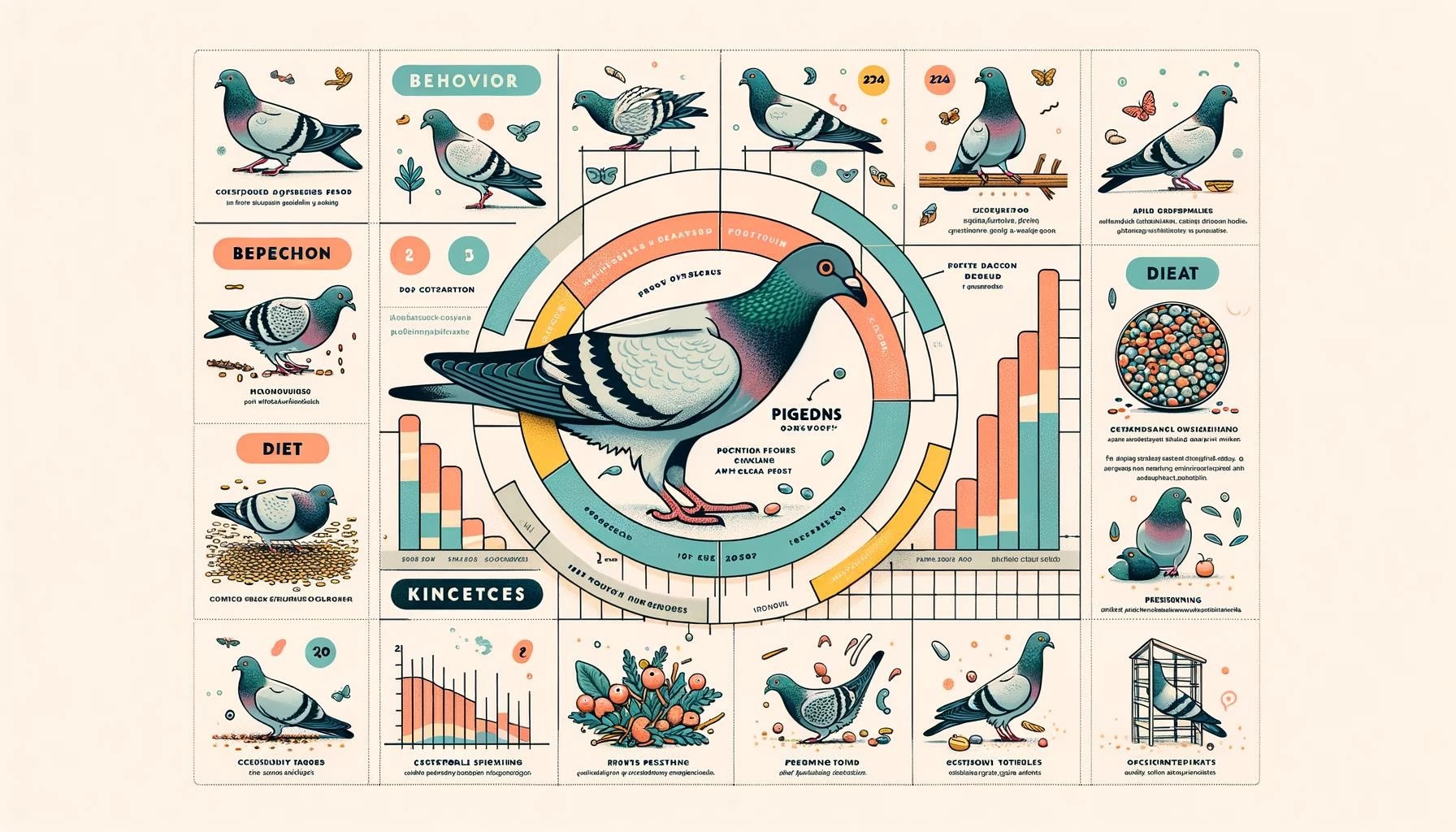Key Takeaways
- Pigeons are intelligent, social, and adaptable animals that can form strong bonds with their owners. They exhibit a range of behaviors, including preening, cooing, and head-bobbing.
- Pigeons in captivity can live up to 15 years or more, compared to an average lifespan of 3-5 years in the wild.
- The diet of pigeons primarily consists of seeds, grains, and pellets, and offering a variety of these foods ensures they receive the necessary vitamins and minerals.
Behavior of Pigeons in Captivity
When it comes to behavior, pigeons are intelligent, social, and adaptable animals. They can form strong bonds with their owners and display a range of behaviors that make them fascinating to observe.
Pigeons are known for their preening behavior, where they meticulously clean and groom their feathers. This behavior not only keeps their feathers in good condition but also helps to spread natural oils throughout their plumage, providing waterproofing and insulation.
Cooing is another well-known behavior of pigeons. Male pigeons often coo to attract mates or establish their territory. Their distinctive cooing sounds are created by inflating their throat and chest, and they may bow and strut in a circle during this display.
Head-bobbing is a common behavior observed in pigeons. It involves rhythmic movements of the head, often accompanied by a slight bobbing motion of the body. Head-bobbing is believed to be a form of communication and may serve various purposes, such as signaling mating readiness or expressing contentment.
In addition to these behaviors, pigeons are also known for their homing instincts. They have a remarkable ability to navigate and find their way back to their original location, even over long distances. This behavior has been utilized by humans for centuries, particularly in pigeon racing, where pigeons are released from a specific location and timed to see how quickly they can return to their home loft.
Overall, pigeons in captivity exhibit a range of interesting behaviors that highlight their intelligence, sociability, and adaptability.
Diet of Pigeons in Captivity
The diet of pigeons can vary depending on whether they are in the wild or in captivity. In the wild, pigeons primarily feed on seeds and grains, along with occasional insects and vegetation.
In captivity, it is important to provide a balanced diet that meets the nutritional needs of pigeons. The main component of a domestic pigeon’s diet is seeds and grains. It is recommended to offer a variety of these foods to ensure they receive a wide range of nutrients.
One way to provide a varied diet is by mixing different types of seeds and grains yourself or purchasing a mixed seed bag from a pet store. Besides seeds and grains, pigeon pellets are also a good supplement to their diet. These pellets are specially formulated with the necessary vitamins and minerals to support their overall health.
It’s important to note that the diet of pigeons in captivity should not solely rely on bread or other human food scraps, as these may not provide the necessary nutrition for their well-being. Instead, providing a diverse and balanced diet specific to pigeons is crucial for their optimal health and longevity.
Lifespan of Pigeons in Captivity
The lifespan of pigeons in captivity is generally longer than that of pigeons in the wild. In the wild, pigeons face various threats, such as predation, disease, and environmental factors, which can significantly affect their lifespan.
Pigeons in captivity, on the other hand, are protected from many of these risks and can live longer under proper care and conditions. With good nutrition, regular healthcare, and a safe, clean living environment, pigeons in captivity can live up to 15 years or more.
It’s worth noting that the lifespan of pigeons can be influenced by factors such as genetics, diet, exercise, and overall well-being. Providing a suitable and enriching environment for captive pigeons is essential for their longevity and overall quality of life.
In conclusion, pigeons in captivity exhibit fascinating behaviors, such as preening, cooing, and head-bobbing. Their diet should primarily consist of seeds, grains, and pellets, with a focus on providing a varied and balanced nutrition. With proper care, pigeons in captivity can live longer than their wild counterparts, highlighting the importance of responsible ownership and a suitable environment for their well-being.








